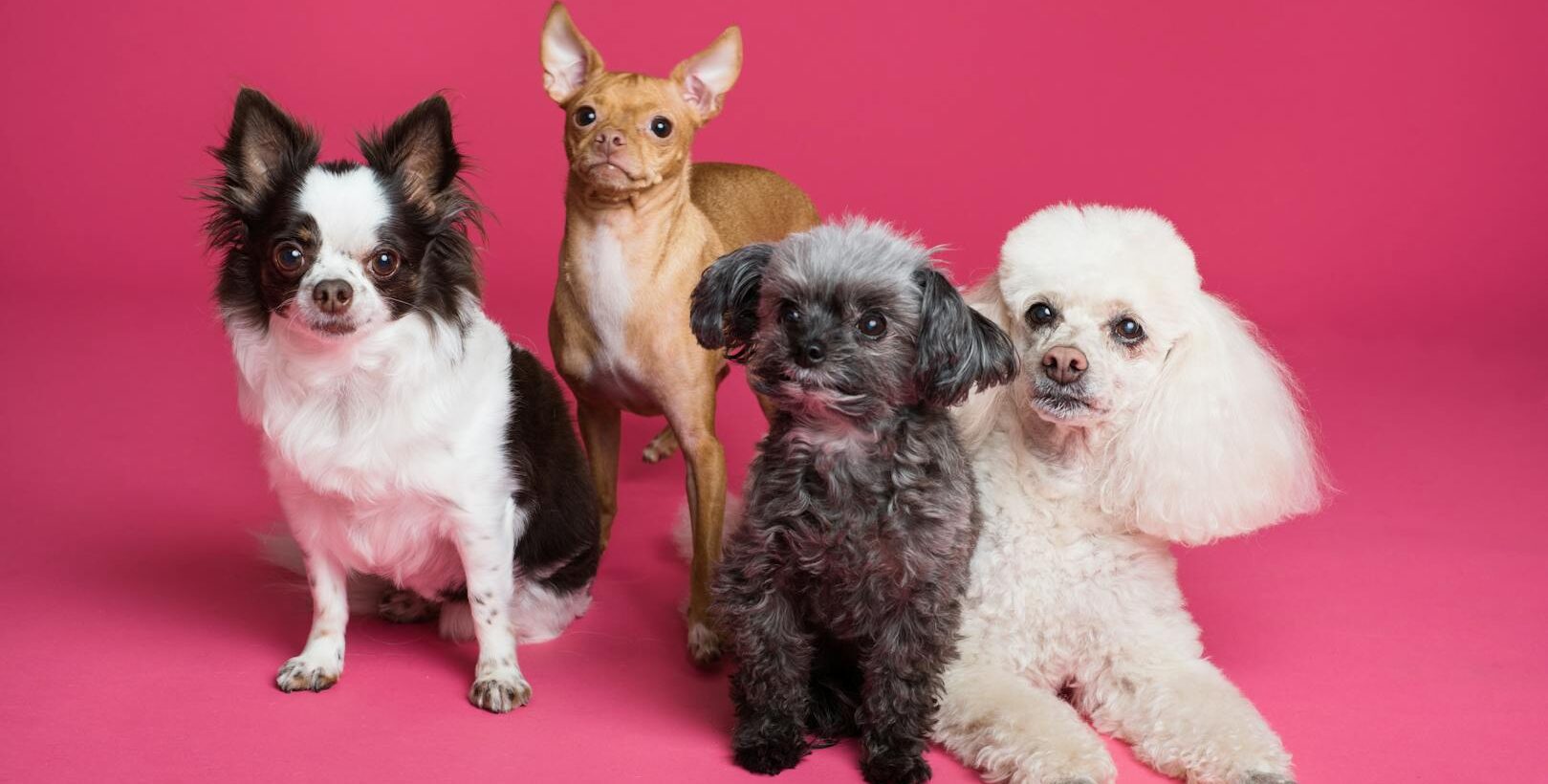What are the hardest dogs to groom?
Last Updated: January 10, 2025
![hardest-dogs-to-groom A collage featuring some of the potentially hardest dogs to groom. From left to right: An Old English Sheepdog with a floating question mark by its face; a Pembroke Welsh Corgi with a floating question mark by its face; [Second row] a red cattle dog with a floating question mark by its face; a Cocker Spaniel with a question mark by its face; and a white poodle.](https://wellnessproinsurance.citadelus.com/wp-content/uploads/bb-plugin/cache/hardest-dogs-to-groom-1536x1024-landscape-f7961f2fae5946a860898dfb33ec40ba-753140bl62ry.png)
If you’re a dog groomer, chances are you’re a dog lover. From tail wags to slobbery smooches, floppy ears and boopable noses, these furry friends are irresistibly sweet, cute, and loyal. But even the best canine companions can be difficult to groom.
In this article, we discuss reasons why dogs can be tricky to groom, which tend to be the hardest dogs to groom, and solutions for grooming difficult dogs.
Grooming Difficult Dogs: What makes a dog hard to groom?
When it comes to grooming, not all dogs are created equal. The hardest dogs to groom have things in common. Here are three things that make a canine tricky to treat:
- High-maintenance coats. While some pups get by with only washing when they’re muddy or smelly, others need regular routines. Many consider dogs that need grooming to be high maintenance dog breeds. Such dogs’ coats require regular brushing, bathing, and drying to be healthy and happy. Curly or wool coats or dog breeds with double coats require additional combing to get to the base of the hairs and prevent matting.
- Fur prone to matting. Matting refers to dense tangles, knots, and clumps that form in a dog’s fur. Restricting air flow and trapping moisture, mats can cause irritation, sores, and hematomas, writes Woof Gang Bakery & Grooming in their article “What your groomer wants you to know about matting.” While any long-haired dog can get matting, certain breeds and coats are more prone to matting, says Woof Gang. Dematting and shaving matted dogs can be difficult, though sometimes it’s the only realistic correction for heavily matted coats. clients having unrealistic expectations about treatment doesn’t help.
- Anxious or aggressive temperament. Like so many humans who dread trips to the dentist, lots of furry friends fear salons. Negative past experiences and anxious temperaments can exacerbate fears. An anxious dog is more likely to make sudden movements or try to run away, which can lead to injuries. They may also become aggressive, biting or scratching to defend themselves from perceived harm.
Which dogs are the hardest to groom? Our Top 12
Now that you know what makes a dog difficult to groom, you can probably picture the breeds that most often fall under these categories. Due to size, coat type, or average temperaments, these breeds are often regarded as the hardest dogs to groom:
- Cocker Spaniels
- Poodles
- Komondors
- Newfoundlands
- Afghan Hounds
- Bichon Frisé
- Old English Sheepdogs
- Pulis
- Lhasa Apso
- Shih Tzu
- Pomeranians
- Bearded Collies
Did we miss any of your most difficult clients? Let us know which dogs are the hardest to groom in your experience on our Instagram and TikTok pages.
Solutions for the Hardest Dogs to Groom
You know what makes grooming tough and you know which are the hardest dogs to groom. Now let’s talk about solutions. Here are six practical tips for grooming difficult dogs.
1. Set expectations with pet owners.
Encourage clients to groom early and often–good advice regardless of hair type or temperament. If you have a matting dog or a dog that needs a lot of maintenance, explain grooming requirements and give recommendations to your clients. For example, if they’re only coming in once every 8 weeks and they should be coming every four, tell them that and why. Also explain the potential repercussions of prolonging a groom, like a shave.
2. Ask questions.
Don’t assume what the customer wants. Ask! What overall length do they want? What about on the face and feet? Ear hair?
3. Use the right tools.
Just like different people require different grooming tools, so do dogs. Use the right tools for the right breeds and temperaments. Dealing with curly hair? Don’t skip a hi-vac dryer. Have a nervous pup? Consider using Mutt Muffs or grooming them away from unnecessary stimuli.
4. Have a process and stick to it.
With high maintenance dogs, the amount of hair and the difficulty of the cut can be overwhelming. But if you plan how you’ll approach a certain breed and stick to that regimen, you’re more likely to remain calm and consistent, and you’re less likely to make mistakes. Same goes for other services, like ear cleaning and teeth brushing. If you’re faced with a difficult dog nail trimming, you’ll be grateful you made a plan ahead of time.
5. Prioritize safety.
Groomers that take aggressive dogs should know safety comes first for the dogs and you. If a dog is aggressive, use restraints . Just make sure to use the right size and use them correctly, says Wag! in “How to Groom an Aggressive Dog.”
6. Take breaks.
Don’t feel pressured to groom fast. Take your time and take breaks if you–or the dog–need it, recommends Wag in the same article.
Protect Yourself and Your Salon
We all wish every pup and their owner could leave the salon happy, healthy, and excited for the next visit.
But that doesn’t always happen. Sometimes, groomers make mistakes–like cutting a dog’s nails too short or not rinsing the dog thoroughly enough. Other times, you’re accused of doing something wrong–like shaving a dog unnecessarily or inflicting harm.
When clients complaints strike, have peace of mind and protection with WellnessPro Insurance. Read more about our dog groomers coverage here.

